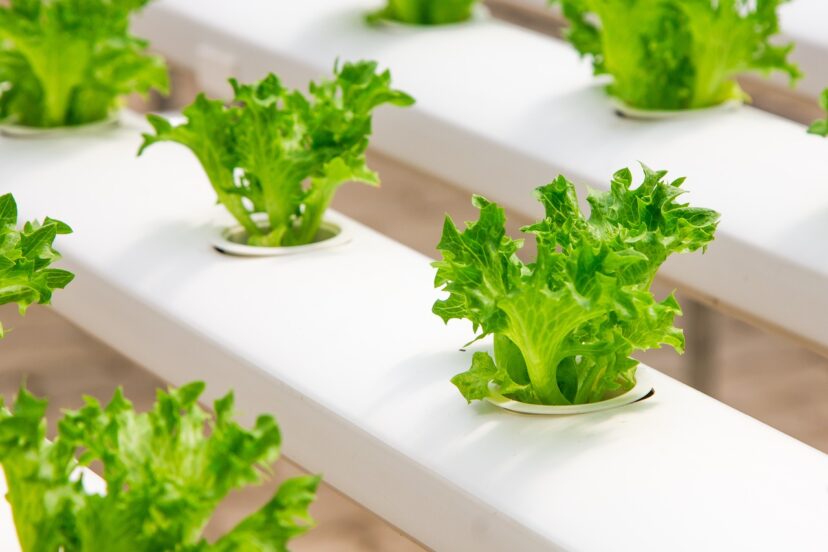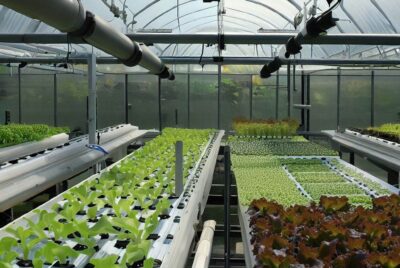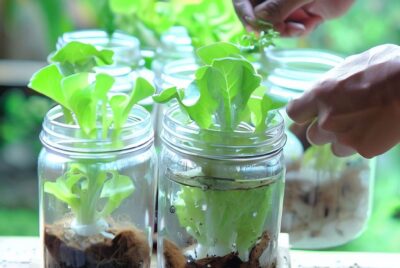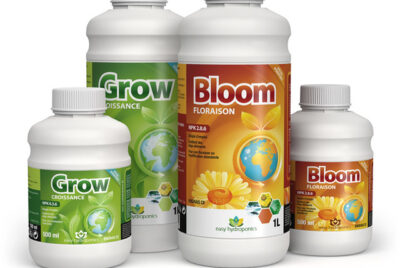Growing Hydroponic – What Can You Grow?
*We may earn a commission for purchases made using our links. Please see our disclosure to learn more.
Introduction
-
- Importance of knowing what can you grow in your hydroponic garden
-
Grow Hydroponic Leafy Greens
-
Lettuce
-
Spinach
-
Kale
-
Swiss Chard
-
-
Grow Hydroponic Herbs
-
Basil
-
Mint
-
Cilantro
-
Parsley
-
-
Grow Hydroponic Fruiting Vegetables
-
Tomatoes
-
Cucumbers
-
Peppers
-
Strawberries
-
-
Grow Hydroponic Root Vegetables
-
Radishes
-
Carrots
-
Beets
-
-
Conclusion
- Summary of the possibilities in hydroponic gardening
- Encouragement to explore and experiment with different plants
Growing Hydroponics – What Can You Grow
Introduction:
When it comes to hydroponics – what can you grow! The possibilities for growing a wide variety of plants are truly endless. In this article, we will explore the exciting world of hydroponic gardening and discuss the types of plants that thrive in this soil-less system. Whether you have limited outdoor space or simply want to explore a new way of growing your favorite plants, hydroponics offers a fantastic solution. Let’s see – What YOU can Grow!
Grow Hydroponic Leafy Greens:
Leafy greens are some of the easiest and most popular plants to grow in a hydroponic system.
Growing Hydroponic Lettuce
With its vibrant colors and crisp texture, is a perfect choice. Choose the right type of lettuce for your hydroponic system. Some varieties, like Butterhead or Bibb lettuce, tend to perform exceptionally well in hydroponic setups due to their compact size and quick growth. They are also known for their tender leaves and delicious flavor, making them perfect for salads.
Another important aspect is the choice of nutrient solution. Lettuce requires a balanced blend of essential nutrients to thrive. You can easily find pre-formulated hydroponic nutrient solutions specifically designed for lettuce. These solutions provide the ideal combination of macronutrients, micronutrients, and trace elements necessary for healthy growth.
Grow Spinach
Packed with nutrients, can be grown all year round. Now let’s talk about the ideal spinach variety for hydroponic cultivation. Look for varieties that are specifically suited for indoor gardening and have a shorter growing period. Baby spinach varieties, such as ‘Bloomsdale’ or ‘Space,’ are great options. They grow quickly, have tender leaves, and are perfect for salads or sautéing.
Now, let’s focus on the hydroponic setup. Spinach thrives in a well-drained growing medium, such as rockwool or perlite. These mediums provide excellent aeration and moisture retention for the roots. Set up your hydroponic system, ensuring that it provides ample support and stability for your growing spinach plants.
Grow Kale
Known for its robust flavor and incredible health benefits, is another leafy green that thrives in hydroponics.
Choose the right kale variety for hydroponic cultivation. Look for varieties that are known for their tender leaves and compact growth habit. Some popular options include ‘Lacinato’ or ‘Curly Green’ kale. These varieties are well-suited for indoor gardening and will thrive in your hydroponic system.
Now, let’s focus on the hydroponic setup. Kale prefers a well-drained growing medium, such as coco coir or a mixture of perlite and vermiculite. These mediums provide excellent root aeration and moisture retention. Set up your hydroponic system, ensuring that it provides adequate support and stability for your growing kale plants.
Grow Swiss Chard
With its colorful stems and tender leaves, is an excellent addition to any hydroponic garden.
There are several different types available Swiss Chard, such as Rainbow Chard, Bright Lights, or Fordhook Giant. Each variety offers its own unique blend of colors and flavors, so pick the one that appeals to your taste buds and aesthetic preferences.
Now, let’s discuss the hydroponic setup. Swiss chard thrives in a well-aerated growing medium, such as perlite or coco coir. These mediums provide excellent drainage and allow the roots to access the necessary oxygen. Set up your hydroponic system, ensuring it provides the right support and stability for your Swiss chard plants.
Growing Hydroponic Herbs:
Growing herbs in hydroponics brings a delightful aroma and freshness to your home.
Basil
With its rich flavor and versatility, is a favorite among gardeners. First things first, let’s choose the right basil variety for your hydroponic garden. You’ll find various types of basil, each with its unique flavors and characteristics. Whether you prefer the classic sweet basil, the spicy Thai basil, or the purple-hued Opal basil, select the variety that suits your taste preferences and culinary needs.
Regular pruning is crucial for basil plants to promote bushier growth. Pinch off the top sets of leaves regularly to encourage lateral branching and prevent the plants from becoming leggy. This will result in a fuller and more abundant harvest of aromatic basil leaves.
Mint
Known for its refreshing scent and medicinal properties, can be grown easily in a hydroponic setup. First off, let’s talk about selecting the right variety of mint for your hydroponic garden. From the classic spearmint to the zesty peppermint and even unique varieties like chocolate mint or pineapple mint, there’s a world of flavors to explore. Choose the type that appeals to your taste buds and suits your culinary endeavors.
Now, let’s dive into the hydroponic setup for your mint. Mint plants thrive in well-drained growing mediums, so consider using rockwool cubes or perlite to provide excellent root aeration. Make sure your hydroponic system allows for good drainage, as mint doesn’t like soggy roots.
Mint has a tendency to spread, so it’s important to regularly trim and prune the plants to prevent them from taking over your hydroponic system. Snip off the top sets of leaves regularly to encourage bushier growth and discourage legginess. Plus, regular harvesting will provide you with a steady supply of fresh mint leaves.
Remember to keep an eye on the temperature and humidity levels in your hydroponic environment. Mint prefers a moderate temperature range of 60-70°F (15-21°C) and appreciates some humidity. If needed, you can use a humidifier or place a tray of water near the plants to increase humidity.
Cilantro
With its distinct flavor used in various cuisines. First things first, let’s talk about selecting the right cilantro variety for your hydroponic garden. There are different types of cilantro available, each with its unique characteristics. Some are known for their strong flavor, while others have a milder taste. Consider your personal preference and the flavor profile you’re aiming for in your recipes.
Now, let’s dive into the hydroponic setup for your cilantro. Cilantro thrives in well-drained growing mediums, so opting for a substrate like coconut coir or perlite can provide excellent aeration to the roots. Ensure your hydroponic system has proper drainage to prevent waterlogging, as cilantro doesn’t like its roots sitting in excess moisture.
Cilantro has a relatively short lifespan, with a tendency to bolt and produce flowers. To prolong the leafy stage, it’s crucial to harvest the outer leaves regularly. This not only encourages continuous leaf growth but also prevents the plants from going to seed too quickly. Harvesting is a joyous opportunity to savor the aromatic leaves and incorporate them into your culinary masterpieces.
Parsley
A staple herb in many dishes, another ideal choice for hydroponic cultivation. First and foremost, let’s discuss the variety of parsley that’s best suited for hydroponic cultivation. Flat-leaf parsley, also known as Italian parsley, is a popular choice due to its robust flavor and lush appearance. It’s perfect for adding depth to soups, stews, salads, and various other culinary delights.
Now, let’s dive into the hydroponic setup for your parsley. Parsley prefers a well-drained growing medium, such as coco coir or rockwool cubes. These substrates provide excellent aeration to the roots and allow for optimal nutrient absorption. Make sure to choose a hydroponic system that promotes good drainage to prevent waterlogging, as excessive moisture can lead to root rot.
Growing Hydroponic Fruiting Vegetables:
Contrary to popular belief, you can grow a wide range of fruiting vegetables in hydroponics.
Grow Hydroponic Tomatoes
With their juicy, flavorful fruits, thrive in a well-maintained hydroponic system. When it comes to choosing the right tomato variety for hydroponic cultivation, consider indeterminate varieties that are known for their vigorous growth and high yield. Popular choices include cherry tomatoes, beefsteak tomatoes, and heirloom varieties, each with its own unique taste and characteristics. Select a variety that suits your preferences and culinary needs.
Now, let’s discuss the hydroponic setup for your tomato plants. Tomatoes thrive in a well-drained growing medium, such as coconut coir or perlite. These substrates provide excellent moisture retention while allowing the roots to breathe. Ensure your hydroponic system has adequate support structures like trellises or cages to help the tomato vines grow vertically and prevent sprawling.
Pruning and training your tomato plants are crucial for maintaining their health and maximizing fruit production. Remove any suckers or side shoots that develop in the leaf axils to direct energy towards fruit production. As your plants grow, gently tie the main stem to the support structure, ensuring proper airflow and preventing overcrowding. This helps the plant focus its energy on fruit development.
Proper pollination is essential for tomato plants to set fruit. In hydroponic systems, hand pollination is often required since natural pollinators may not be present. Gently shake the tomato plants’ flower clusters or use a small brush to transfer pollen from one flower to another. This simple step ensures successful pollination and leads to a bountiful harvest.
Grow Hydroponic Cucumbers
With their crisp texture and abundant yields, can be successfully grown vertically.
When it comes to selecting cucumber varieties for hydroponic cultivation, opt for compact and bushy varieties that are well-suited for confined spaces. Varieties like English cucumbers, Persian cucumbers, or mini cucumbers are excellent choices. Consider your preference for slicing cucumbers or smaller pickling cucumbers, and select a variety that suits your taste and growing conditions.
Now, let’s talk about the hydroponic setup for your cucumber plants. Cucumbers thrive in a well-drained growing medium like coconut coir or rockwool cubes. These substrates provide excellent moisture retention while allowing the roots to access oxygen. Make sure your hydroponic system has sturdy trellises or vertical supports to train the cucumber vines and prevent them from sprawling on the ground.
Proper pollination is crucial for cucumber plants to set fruit. In hydroponic systems, manual pollination is often necessary since natural pollinators may not be present. You can do this by gently transferring pollen from the male flowers to the female flowers using a small brush or even your fingertip. This ensures successful pollination and an abundant crop of cucumbers.
Grow Hydroponic Peppers
Whether sweet or spicy, flourish in hydroponic environments. And for those with a sweet tooth, strawberries can be a delightful addition to your hydroponic garden.
When it comes to choosing pepper varieties for hydroponic cultivation, there’s a wide range of options to explore. Whether you prefer bell peppers, jalapeños, habaneros, or even exotic varieties, consider your taste preferences and the level of heat you desire. Select pepper varieties that are well-suited for indoor growing and compact enough to thrive in hydroponic systems.
Pruning and supporting your pepper plants are important aspects of hydroponic cultivation. Regularly pinch off any suckers or side shoots that develop between the main stem and branches. This helps focus the plant’s energy on fruit production and ensures better airflow, reducing the risk of disease. Use trellises or stakes to support the pepper plants as they grow, preventing them from toppling over under the weight of their bountiful harvest.
And for those with a sweet tooth
Growing Hydroponic Strawberries
Can be a delightful addition to your hydroponic garden. When it comes to hydroponic strawberry cultivation, there are a few key considerations to keep in mind. First and foremost, select the right strawberry variety that is well-suited for indoor growing. Look for compact and day-neutral varieties that thrive in hydroponic systems. These varieties are known to produce a continuous harvest throughout the year.
Choosing the right growing medium is crucial for hydroponic strawberry success. Opt for a substrate that provides good drainage while retaining moisture, such as coconut coir or rockwool cubes. These mediums allow the roots to access water and nutrients while preventing waterlogging.
Proper pollination is crucial for strawberry production. Since hydroponic systems don’t rely on pollinators, you’ll need to manually pollinate the flowers. Gently brush the flowers with a soft brush or use a vibrating tool to simulate the natural pollination process. This helps the flowers develop into juicy strawberries.
Regular maintenance tasks include removing any yellowing or dead leaves, pruning runners to redirect energy to fruit production, and providing support for the growing plants. By removing runners, you encourage the plant to focus on producing larger and tastier strawberries. Use trellises or supports to keep the plants upright and prevent the weight of the fruits from damaging the stems.
Growing Hydroponic Root Vegetables:
While root vegetables might not be the first choice that comes to mind in hydroponics, some varieties can be successfully grown.
Grow Hydroponic Radishes
With their vibrant colors and peppery taste, develop quickly and are a great option for hydroponic cultivation. When it comes to hydroponic radish cultivation, simplicity is key. These root vegetables are known for their quick growth and are perfect for beginners. To start, select a radish variety that suits your taste preferences, whether it’s the classic round red radish or the elegant and elongated French Breakfast radish.
Choosing the right hydroponic system is crucial for radish cultivation. Options like the nutrient film technique (NFT) or deep-water culture (DWC) work well for radishes. These systems provide continuous access to water and nutrients, promoting healthy root development and vigorous growth.
Harvesting radishes is a satisfying experience. Depending on the variety, most radishes will be ready for harvest within 20-30 days. Simply pull them out of the growing medium when they reach the desired size. Remember, the smaller the radish, the more tender and mild the flavor.
Grow Hydroponic Carrots
Although requiring some extra care, can yield sweet and tender roots in a well-maintained hydroponic system. When it comes to growing hydroponic carrots, simplicity and attention to detail are key. Carrots are root vegetables that thrive in well-drained and loose soil. In a hydroponic setup, this translates to using a substrate like perlite or coco coir that allows for proper root development while maintaining adequate moisture levels.
Carrots are known for their long taproots, so it’s important to provide enough space for their development. Consider using deeper hydroponic containers or systems that allow the roots to grow downwards freely. This ensures the carrots have ample room to expand and form those delicious, elongated roots.
Harvesting hydroponic carrots is a rewarding experience. Depending on the variety, carrots are typically ready for harvest within 60-80 days. Gently loosen the growing medium and carefully pull out the carrots when they reach the desired size. Don’t forget to admire their vibrant colors and savor the crisp, sweet taste that you’ve nurtured.
Grow Hydroponic Beets
Known for their earthy flavor and nutritious qualities, can also be grown hydroponically. When it comes to growing hydroponic beets, simplicity and attention to detail are key. Beets are root vegetables that thrive in well-drained and fertile soil. In a hydroponic setup, we can achieve similar conditions by using a substrate like coconut coir or vermiculite that provides excellent moisture retention and aeration for the roots.
Choosing the right beet variety is important. Look for varieties specifically bred for container or hydroponic gardening. These cultivars often have shorter maturation periods and perform well in the controlled environment of a hydroponic system.
Beets have a unique growth habit with both edible roots and delicious leafy greens. Harvesting the greens when they reach a desirable size encourages continuous growth and allows you to enjoy them in salads or sautés. As for the beetroots, they are ready for harvest in around 8-10 weeks. Gently loosen the growing medium and carefully lift the beets from the substrate, marveling at their vibrant colors and savoring their earthy flavor.
Conclusion:
Hydroponics opens up a world of possibilities for growing a diverse range of plants. Whether you’re interested in leafy greens, herbs, fruiting vegetables, or even root vegetables, hydroponics provides an efficient, space-saving, and sustainable way to cultivate your favorite plants. Experiment with different varieties, techniques, and nutrient solutions to maximize your hydroponic success.
FAQs (Frequently Asked Questions)
- Can I grow flowers in hydroponics?
- Flowers can be successfully grown in hydroponic systems, including roses, orchids, and marigolds.
- Do I need expensive equipment to start a hydroponic garden?
- Hydroponics can be started on a small scale with basic equipment such as nutrient solution, containers, and grow lights.
- How often do I need to check the nutrient levels in my hydroponic system?
- Nutrient levels should be monitored regularly, at least once a week, to ensure proper plant growth and health.
- Can I use organic nutrients in hydroponics?
- There are organic nutrient options available specifically designed for hydroponic gardening.
- Is hydroponic gardening suitable for beginners?
- Hydroponics can be a great option for beginners as it offers precise control over plant nutrition and eliminates




